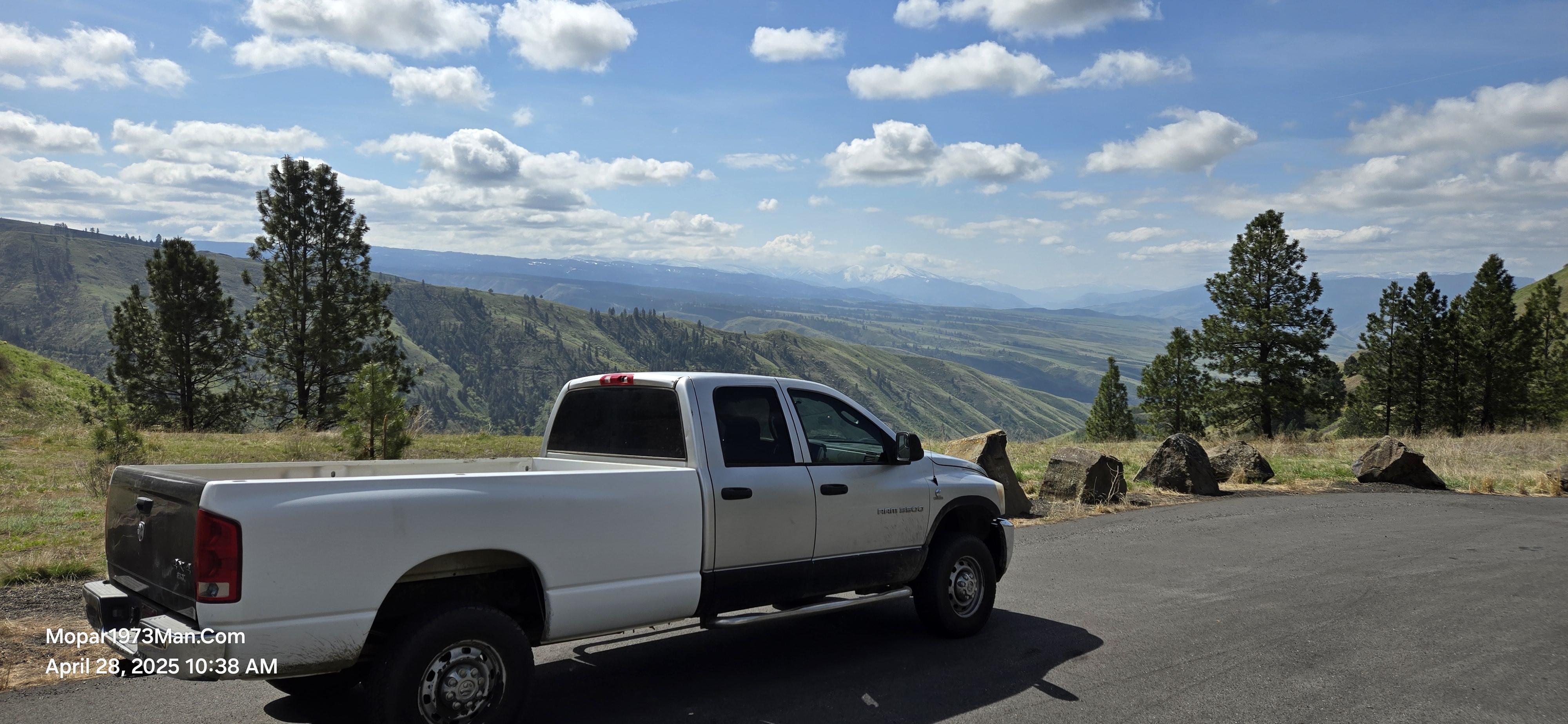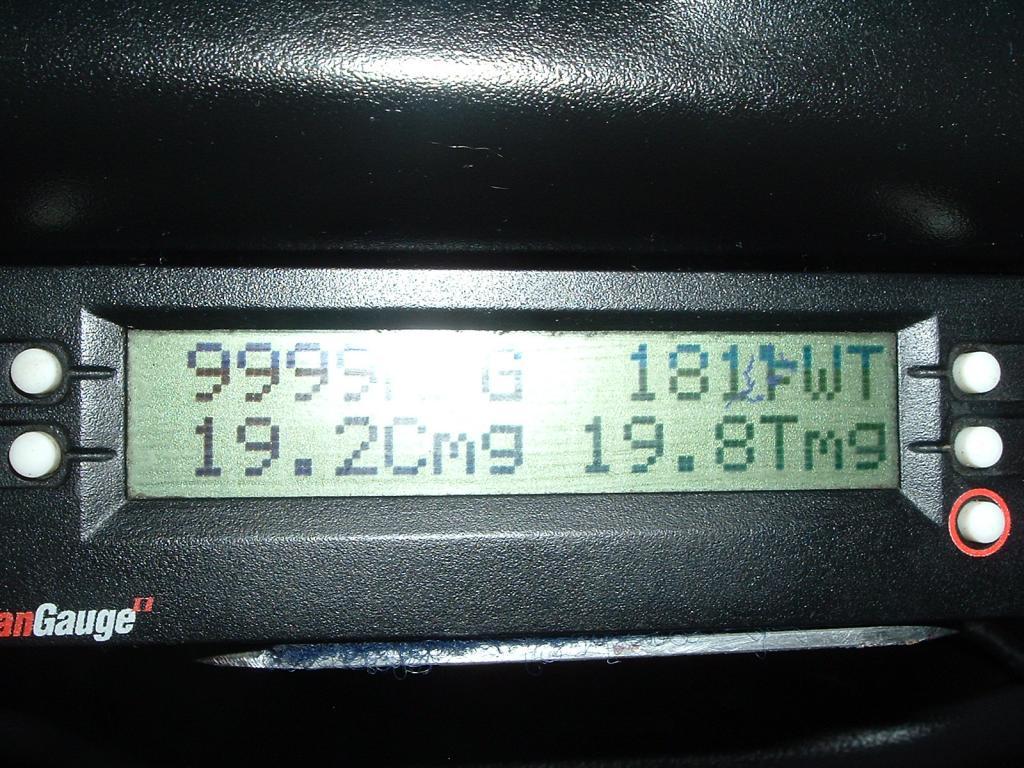
Everything posted by Mopar1973Man
-
New to forum am I on the right track
Your on the right track... That AirDog 100 will support upwards of 400 HP easy. The biggest trick is making sure you can hold at least 14 PSI of pressure at all times. This will keep the overflow valve open all the time which keeps the pump lubed and cooled better.
-
rear brakes locking up
Rust in the drum problem... I use to have that problem all the time with the 96 Ram I've got I roll down the driveway barely touch the brakes and the rear wheels where skidding... Now that I drive the truck more the problem isn't there any more... Also keeping the truck in a shop at night...
-
Bio Diesel Fuel 2010 Ram 3500
During the time of producing BioDiesel the fuel must be washed with water to remove the gycerin from the fuel. So alot of home brewers get a sloppy about get the water drained of and manufactures also in the pass had issues with quality control. So Mopar and Cummins set the limit of 20% because below that level it mostly petroleum diesel and the chances of get large amount of water is thinned down. I'm not a pro of making Bio but listened to plenty of tales of production and read up on Dodge/Cummins specs of using it. Here is what happens if you don't wash the fuel properly...
-
Great Snow Goose Hunting Weekend in SEMO
So very true... Most kids today don't know the first thing about cooking. I'm no Chief Boy R Dee but I can at least cook a good meal if need be without using a microwave or something in a box. That means breaking out the measuring cup, measuring spoons, etc. and doing the hard way from scratch. Yes I know know to use a cookbook...
-
Block Heater temps
That's about right... Back in my fire fighter days I use to keep it plugged in all the time. With the garage temp about 32-35*F in the winter it would float about 110-120*F clooant temp and then manifold temp (IAT) would be right there close to it.
-
MPG fooler / MPG report...
Last summer with the lighter tires on 235/85 R16's @ 62# per tire and running Edge Comp on 5x5 I was getting 21-22 MPG easy. As for last winter I was barely making 20-21 MPG.
-
MPG fooler / MPG report...
Well it been down right cold here today... Started my morning heading through New Meadows, ID at -2*F and travelled down to Ontario, OR for a few odds and ends supplies for back home. The average temp for the day was about +25*F roughly but then returning home and crossing New Meadows, ID again just before sunset at +12*F didn't reall get all that warm. (Brrr)...Now I will admit I high idled (6 Cylinder) to warm up the truck this morning and then kicked high idle back on anywhere we stopped keeping the truck cab warm. (Short stops). By the time we got to Ontario, OR wasn't too bad for weather so never used high idle again. IAT fooler is set at 143*F still... As for the Edge Comp I'm trying a smokeless tune (5x3) Which is full 120 HP but only 67% of stock fuel below 10 PSI of boost. Then on top of it I'm running my big heavy tires 265/75 R16's (85# a piece).Round trip 19.2 MPG and just the return leg I got 19.8 MPG. (ScanGauge II)Since I did two fillups from the same station at the same pump I double checked my ScanGauge II and it on the money... :thumbup2:So I'm tickled with the numbers even for winter fuels and winter cold temps!
-
Great Snow Goose Hunting Weekend in SEMO
Just to be nice I'll bring a copy of Dorkweed's pics to the site... That's a lot of bird to eat...
-
Codes the old fashion way
1998.5 to 1999 - Key trick doesn't work.2000 - May or may not work properly I've seen some report normally PCM and ECM and some only PCM.2001 - Only PCM will report.2002 - Both PCM and ECM computers will report.Still best to use a OBDII scan tool...
-
ANOTHER fuel question
Hopefully ISX shows up he should know a bout more about the fuel system routing. As for what I know I think your right where it passes the pre-filter and then lift pump and up to the main filter... But don't quote me on this...Another one that could answer this is Relentless70 he's also a 1st gen owner but I've not seen him in a while...
-
Hot Run Issue?
Glad you got an answer to your problem hopefully this time you'll take your time installing the pump...
-
What a thrill
It's nice to do that once in while... Like mine is sitting in the garage below me... Need to be taken out and flogged once in while...
-
2007 2500 5.9L Won't start - need some input before I buy a new CP3 injector pump
I'm hoping either AH64ID or Wild and Free to show up... They are good with CR Engines...As for my shot in the dark there is something wrong if the CP3 isn't building pressure. So if the FCA is unplugged you can see through it right? Did you try starting/cranking with the FCA unplugged?
-
RV275 Injectors?
Last Dyno run was in 07... http://articles.mopar1973man.com/members-rides/17-mopar1973man/145-2002-dodge-ram-dyno-results I'm at about ~400 HP now with the RV275 added... Still only seeing 35 PSI of boost... Not to turn this into dyno competitions... But I'm a odd duck when it comes to dyno numbers and boost pressures... Yes Pepsi is right the 10 HP for each 1 PSI of boost is a rule of thumb. But doesn't always hold true either. Just to let you know.
-
Audi new Superbowl Commercial...
I'm fan of neither... But I think the commerial dumb being he's even dumb enough to walk into the light...
-
AD 100 filter change tips??
I use a pair of vise grips to gently squeeze the hose and hold the prime...
-
Audi new Superbowl Commercial...
More dumb commerials.
-
www.dieseltrucksite.com
Hey Gang... Take a peek over at MnTom's site www.dieseltrucksite.com... Really a nice new look to his site! Way too go MnTom!
-
OBD III: The Motor Law Realized
You know that “check engine” light on your dashboard? What if instead of just telling you that the car’s computer has detected some fault with the emissions control system, it told the government – via roadside readers and satellite uplinks? http://epautos.com/2012/01/30/obd-iii-the-motor-law-realized/ I'm glad I'm keeping my 02.
-
Having some computer issues
Good to hear you got it fixed...
-
new turbo
TH... I don't think you have enough fuel to even spool it.
-
Valve Adjustment HELP!!!
Just keep asking questions and we'll help you out...
-
Valve Adjustment HELP!!!
Same Here... I'm also running the 0.008 and 0.018... Works good for towing and heavy hauling!
-
Rusted out brackets on front axle...
Geez... Russ you going to have to get smart and do something to prevent rusting of parts... Paint? Like my truck I've been known on cold winder days to take the garden hose and hose off the truck and hose out the frame too. But if you want a simple way put a sprinkler under the truck and let it run for 5-10 minutes and move then move the truck to get the rest...
-
Valve Adjustment HELP!!!
No problem that what we are here for to help out!




